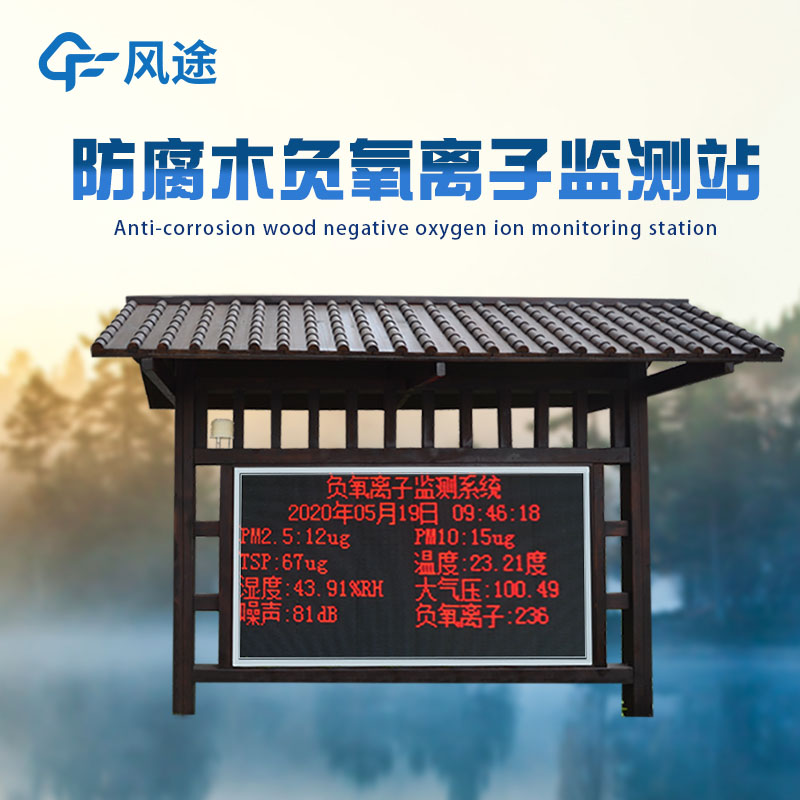Shandong Fengtu IOT Technology Co., Ltd
Sales Manager:Ms. Emily Wang
Cel,Whatsapp,Wechat:+86 15898932201
Email:info@fengtutec.com
Add:No. 155 Optoelectronic Industry Accelerator, Gaoxin District, Weifang, Shandong, China

Sales Manager:Ms. Emily Wang
Cel,Whatsapp,Wechat:+86 15898932201
Email:info@fengtutec.com
Add:No. 155 Optoelectronic Industry Accelerator, Gaoxin District, Weifang, Shandong, China
time:2024-12-06 08:55:03 source:Weather Station viewed:322 time
The monitoring of negative oxygen ions in scenic areas is of great significance. On the one hand, negative oxygen ions are a direct manifestation of the ecological quality of scenic areas. A high concentration of them can purify the air, adsorb dust and germs. Tourists can relax their bodies and minds, relieve fatigue and obtain a health and recuperation experience when staying in such areas. On the other hand, eye-catching data is conducive to the publicity and promotion of scenic areas.
The monitoring process is also carried out in an orderly manner. First, considering the terrain, vegetation and tourist flow, monitoring points are set up in places rich in ions such as waterfalls and mountain forests. Then, professional equipment such as capacitive ones is installed to accurately collect data, which is then transmitted to the cloud platform in real time via 4G and other networks. After professional personnel process and analyze the data, the scenic area optimizes the vegetation layout and plans tourist routes according to the results, so that tourists can fully enjoy the beautiful scenery and fresh air.
"Negative oxygen ion monitor" is a powerful assistant for safeguarding the ecology of scenic areas and serving tourists. It consists of several key components. High-sensitivity negative ion sensors take the lead to accurately capture negative ions in the air. Temperature and humidity sensors as well as particulate matter sensors follow closely behind to collect environmental data in all aspects. The data collector organizes and processes the data, and then transmits it to the cloud platform in real time through 4G and other communication means.
The real-time monitoring is uninterrupted. Tourists can see the current concentration of negative oxygen ions on the display screen at a glance, and simultaneously know the temperature, humidity and air quality. The system also makes good use of big data to deeply explore the correlations between ion concentration and time, weather and vegetation, and provide scientific guidance for the management of scenic areas. Once the content of negative ions "falls short" and touches the warning line, the scenic area can respond quickly by either increasing green plants or controlling the flow of people.
For scenic areas, the monitoring system can not only be used as a publicity highlight to create a health and recuperation brand to attract a continuous stream of tourists, but also accurately plan tourist routes to lead tourists to the "forest oxygen bar" and enjoy fresh air.

In canal shipping, visibility is a key factor affecting the safety of ship navigation. Weather conditions such as fog, haze, rain, and snow can reduce visibility on canals, making it difficult for ship drivers to clearly identify waterways, navigation marks, and other ships, increasing the risk of a...
After natural disasters such as earthquakes and mudslides occur, the communication and power infrastructure in the disaster-stricken areas is often severely damaged, and the conventional meteorological monitoring systems are unable to operate normally. This is when the Portable Weather Station comes...
Microclimate refers to the special climate formed in the atmosphere of a local area, which is different from the macroclimate, due to differences in underlying surface factors such as surface properties, terrain, and vegetation. Compared with the macroclimate, the microclimate is closer to human pro...
With the continuous advancement of transportation infrastructure construction, tunnels are playing an increasingly important role in the modern transportation network. However, the special environment inside the tunnels poses many challenges to driving safety, and the issue of visibility is particul...